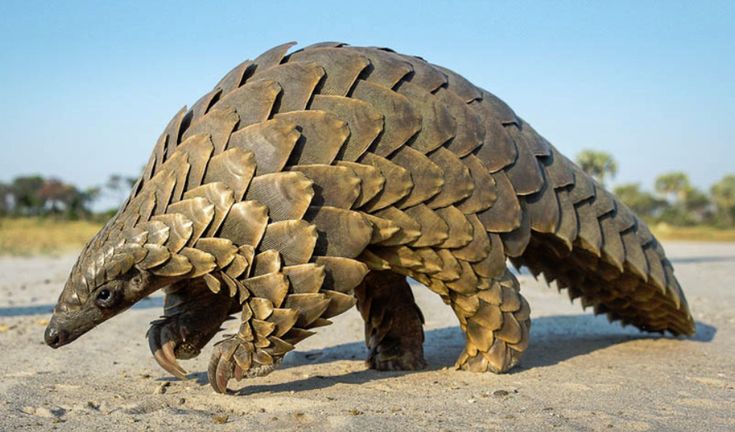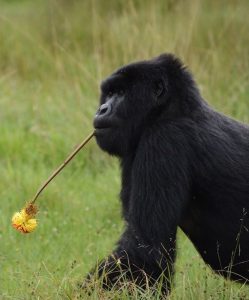Uganda’s most endangered animals
Uganda’s most endangered animals. Uganda has an incredibly diverse range of wildlife, but like many places, it faces threats to some of its species due to habitat loss, poaching, climate change, and human-wildlife conflicts. Here are some of Uganda’s most endangered animals:
1. Mountain Gorilla
- Status: Endangered
- Habitat: Bwindi Impenetrable National Park and Mgahinga Gorilla National Park
- Threats: Habitat destruction, poaching, and disease transmission from humans.
- Conservation Efforts: Intensive conservation efforts, including anti-poaching patrols and tourism revenue used for local community benefits, have helped stabilize and even increase populations in recent years.
2. African Elephant
- Status: Vulnerable (with some populations Endangered)
- Habitat: Found across several national parks, including Murchison Falls and Queen Elizabeth National Parks.
- Threats: Poaching for ivory, habitat loss, and conflicts with humans, especially in areas with agricultural expansion.
- Conservation Efforts: Anti-poaching initiatives, community awareness programs, and legal protections.
3. Chimpanzee
- Status: Endangered
- Habitat: Kibale National Park, Budongo Forest, and Semuliki National Park
- Threats: Deforestation, hunting, and illegal wildlife trade.
- Conservation Efforts: Protection of habitats, ecotourism, and programs that educate local communities on the importance of preserving chimpanzee populations.
4. Rothschild’s Giraffe
- Status: Endangered
- Habitat: Primarily found in Murchison Falls National Park and Kidepo Valley National Park.
- Threats: Habitat loss and poaching.
- Conservation Efforts: Giraffe relocation projects to spread their population across more protected areas and habitat management strategies.
5. Shoebill Stork
- Status: Vulnerable
- Habitat: Wetlands such as Mabamba Swamp and along the Nile in Murchison Falls National Park.
- Threats: Habitat degradation, illegal capture for trade, and disturbance from tourism.
- Conservation Efforts: Wetland conservation, ecotourism regulations, and habitat protection projects.
6. African Lion
- Status: Vulnerable
- Habitat: Queen Elizabeth National Park and Murchison Falls National Park.
- Threats: Human-wildlife conflict, habitat loss, and poaching for traditional medicine.
- Conservation Efforts: Programs that promote coexistence between lions and local communities, and research programs on lion populations.
7. Grey-Crowned Crane
- Status: Endangered
- Habitat: Wetlands and grasslands across Uganda.
- Threats: Habitat loss, illegal trade, and use in traditional ceremonies.
- Conservation Efforts: Community outreach programs to prevent capture and trade, habitat restoration projects, and policies restricting capture.
8. Pangolin
- Status: Critically Endangered (due to high poaching pressures across all species)
- Habitat: Found in Uganda’s forests and woodlands.
- Threats: Poaching for scales and meat, illegal wildlife trade.
- Conservation Efforts: Strengthened anti-poaching laws, wildlife trade monitoring, and awareness campaigns to reduce demand.
9. Golden Monkey
- Status: Endangered
- Habitat: Mgahinga Gorilla National Park in the Virunga Mountains.
- Threats: Habitat loss due to agriculture, deforestation, and human disturbance.
- Conservation Efforts: Protected area management, ecotourism, and education initiatives focused on the benefits of biodiversity conservation.
10. Nile Crocodile
- Status: Least Concern globally, but locally threatened in parts of Uganda
- Habitat: Lake Albert, Lake Edward, Lake Victoria, and the Nile River.
- Threats: Habitat loss and illegal hunting for skin and meat.
- Conservation Efforts: Legal protections, establishment of wildlife reserves, and monitoring of populations in specific habitats.
Conservation Challenges
Despite Uganda’s conservation efforts, challenges remain due to limited resources, high levels of poverty in surrounding communities, and growing human populations encroaching on protected lands. International support, tourism revenue, and community-based conservation are key to improving the situation for these endangered species.
Uganda’s conservation strategy includes protecting habitats, enforcing anti-poaching laws, and involving local communities in tourism and conservation activities, creating a sustainable path to protect these endangered animals.




